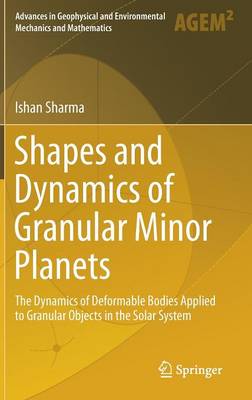Advances in Geophysical and Environmental Mechanics and Mathematics
2 total works
This book develops a general approach that can be systematically refined to investigate the statics and dynamics of deformable solid bodies. These methods are then employed to small bodies in the Solar System. With several space missions underway and more being planned, interest in our immediate neighbourhood is growing. In this spirit, this book investigates various phenomena encountered in planetary science, including disruptions during planetary fly-bys, equilibrium shapes and stability of small rubble bodies, and spin-driven shape changes.
The flexible procedure proposed here will help readers gain valuable insights into the mechanics of solar system bodies, while at the same time complementing numerical investigations. The technique itself is built upon the virial method successfully employed by Chandrasekhar (1969) to study the equilibrium shapes of spinning fluid objects. However, here Chandrasekhar’s approach is modified in order to study more complex dynamical situations and include objects of different rheologies, e.g., granular aggregates, or “rubble piles”. The book is largely self-contained, though some basic familiarity with continuum mechanics will be beneficial.

